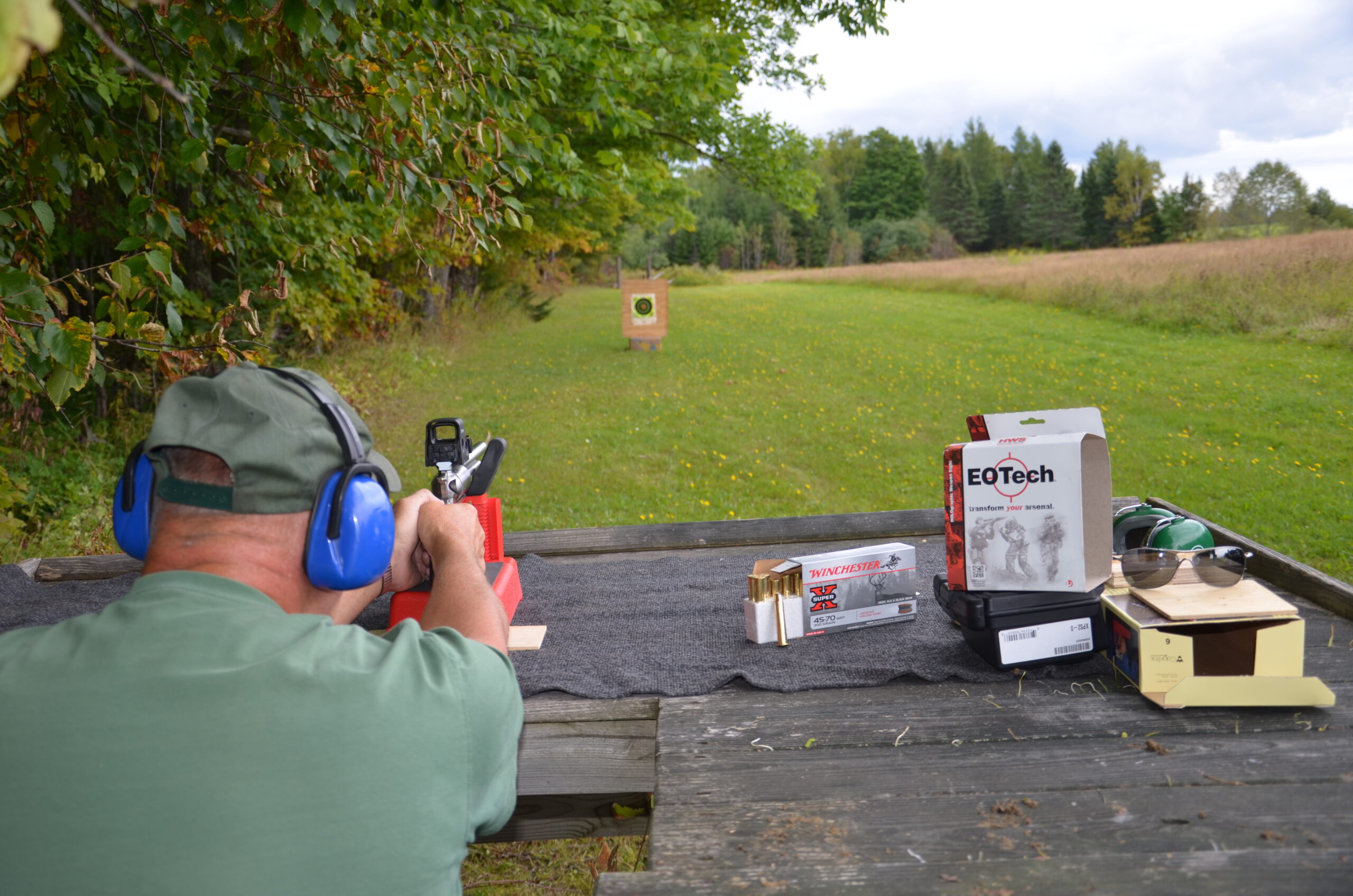
“The game is afoot,” as Sherlock Holmes was fond of saying. November has finally arrived and the long awaited, much anticipated annual rivalry is on.
The green and orange clad team will once again be matching wits with the quick and wily brown and white attired lineup. It’s deer season in the Pine Tree state.
Regardless of what sport a person participates in throughout life, a large portion of success is selecting and maintaining the right equipment.

PRESQUE ISLE, Maine — November 8, 2021 — Sighting in a rifle before deer season is is just good common sense, when it comes time to try longer shots of 100 yards or more, a spotting scope like the one in the photo will save a whole lot of steps checking the target. (Photo courtesy of Bill Graves)
For hunters this is especially crucial, since a quick, humane and lethal shot is essential; it’s one of the prime subjects and objectives in every required hunter safety course. Unfortunately a lot of outdoorsmen are ignoring the essential step of sighting in their weapon before the hunt.
One recent survey shows that over 40 percent of deer hunters take their rifles, handguns, bows and shotguns from their gun safes, wall racks, or storage cabinets where they have been stored since last year and go hunting.
A lot of shooters feel that if a firearm, bow or crossbow was sighted in and hitting the target last season, it’s still dead-on and ready to go this year. Maybe, but do you really want to miss a shot or worse yet wound and lose a trophy buck by skipping a 30-minute trip to the target range?
Sometimes it doesn’t take much of a bump or jarring incident to affect the precision of a scope or even open sights. Just changing the bullet weight or brand of cartridge can alter precision sighting by inches, and inches become feet at longer shooting distances.
Insightful, experienced hunters practice shooting before the season and know which ammo by what manufacturer works best in their gun, or what arrow and broadhead is right for their bow. But because of COVID-19, suddenly a lot of products aren’t readily available and ammunition is a prime example.
Rifle and shotgun shells are like trophy bucks, few and far between, and the price has skyrocketed. For example, a box of 20 45-70 cartridges that cost about $20 a couple of years ago is now almost $60, if you can find any to buy. That’s $3 every time you pull the trigger, none the less it’s still crucial to sight in your guns.
An old favorite deer rifle may only take one shot to confirm the sights are still true, but a new purchase will need some adjustment. Use a bench and a rifle rest for stability when sighting in a scope, red dot or open sites on paper targets; save the off-hand shooting for after the gun is hitting the center X.
Save ammo by beginning at 25 yards and adjusting shot placement at close range, once centered, then it’s time to shoot at 100 yards to confirm bullet rise and drop. When you can put 3 shots in a three-inch circle, that’s venison in the freezer. It’s imperative to know the rise and drop of your particular rifle with a specific cartridge, smart hunters tape the figures to their rifle stock.
For example, my Husqvarna .270 with my special handload when sighted to hit dead center at 25 yards will be dead center again at 225 yards. At 100 yards it is 3-inches high, at 300 yards it is 2 ½ inches low, 5 inches low at 400 yards and 7 ½ inches low at 500 yards. I’ve seldom even needed to shoot beyond 200 yards while deer hunting in Maine.
Modern, high tech scopes will not only determine the exact yardage to a game animal in an open field, but with a couple of quick adjustments for distance and windage compensation will produce a dead on shot where the crosshairs are placed. Change the scene to thick forest, a running deer and open sights or low power scope and results fall on a perfectly sighted gun and a practiced shooter.
Spend the extra time, tolerate the extra cost and reacquaint yourself with that favorite firearm before heading afield for deer, moose, bear or any other game animal. Also, when driving and spotting or sitting overwatch on a field or clear cut, take along an extendable, lightweight mono, bi, or tripod shooting rest, young or old, it will improve stability and accuracy notably. Take nothing for granted, check your rifle accuracy and adjust the scope, perhaps that bit of blurriness is a change in eyesight that a quick scope lens adjustment will cure. It’s all part of being a sportsman, not just a hunter.




